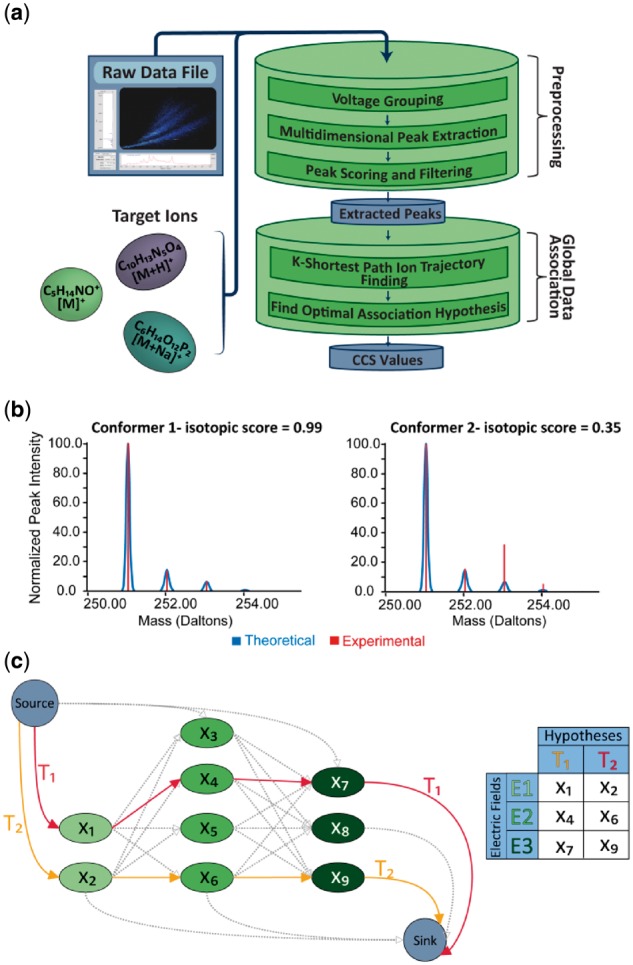Fig. 1.

(a) Steps of the mobility extraction algorithm. A raw data file in UIMF format and a set of target ions are provided as inputs to PIXiE. The preprocessing step starts after voltage grouping to extract and filter peaks. After filtering, the algorithm uses K-shortest path and maximum a posteriori probability estimation to solve the global data association problem and process the peaks into mobility information of conformer ions; (b) Application of isotopic score for improved chemical identification. In the example shown, the software extracted two candidate conformers for bisphenol S (sulfonyl diphenol) when given a low isotopic score threshold in the preprocessing step. When the isotopic score threshold is raised, the latter conformer is removed due to its low isotopic score; (c) the ion transition graph G. Each path from source to sink represents a potential association hypothesis of ion peaks (x1…xn) across multiple electric fields. These hypotheses are evaluated for robustness, and those that pass all filtering steps are used to calculate CCS values. In the example above, two hypotheses, T1 = (x1, x4, x7) and T2 = (x2, x6, x9), represent two conformers measured across three electric fields
